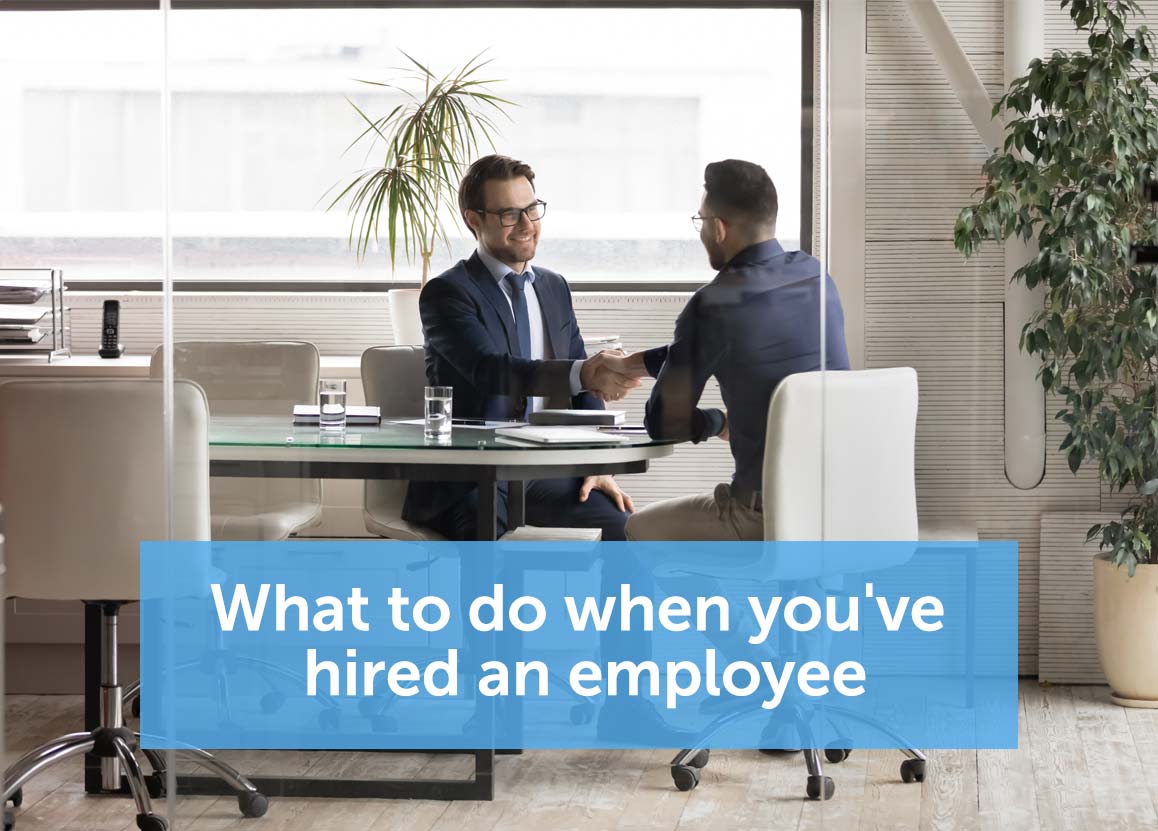What to do when you’ve hired an employee
Congratulations on hiring a new team member!
Hiring your first few employees is usually a very rewarding and exciting experience. That said, it can also be quite daunting; the world of payroll and employment relations is certainly complex.
In an effort to make this onboarding process easier for you, this article is intended to summarise:
- The key information you’ll need to obtain from your employee;
- What information you’ll need to provide to us;
- The other steps you’ll need to complete; and
- A few extra useful tips and tricks.
DISCLAIMER: It’s worth noting that we are accountants. We’re not employment lawyers, nor do we have any expertise in human relations. Employment relations law is complicated and small businesses often overlook the many possible pitfalls. Therefore, this article should only be used as an introductory guide, and we certainly recommend seeking proper legal advice when employing your first staff members.
Before you select your employee:
Lets’ take a step back. You’ve likely addressed the following items before hiring your new employee. But just in case you haven’t, these are all important things you should attend to. (Please let us know if you would like an introduction to an employment lawyer. And note that your profession’s industry body or trade association might also be able to guide you on these aspects.)
- Confirm whether a Modern Award applies to the position and, if so, what are you legally required to pay your new employee? (eg: minimum pay rates, allowances, leave loading)
- Prepare an Employment Agreement, outlining things like working hours, salary, leave entitlements, probation period and termination processes.
- Be ready to provide your employee with a copy of your Staff Handbook and workplace policies. (These documents outline guidelines and rules that apply to all employees, such as health and safety requirements, codes of conduct, guidelines on phone use, performance management processes and policies on applying for holiday or sick leave)
If you will be charging your employee’s time to clients (ie: you’re a service-based business such as a tradesman, engineer or any other type of business that essentially tracks and bills time), then you should ensure you have checked the potential profit of your employee using our Employee Profit Calculator.
Getting your employee setup in payroll:
Once you have obtained the following information from your employee, please send this through to us so that we can set up payroll.
- Your employee will need to complete a:
WARNING: You must pay special attention to superannuation. Of all the areas of compliance it’s by far the harshest if you get it wrong. Please read this article for further details.
(Note: if the employee doesn’t choose their super fund, first you must find their stapled super fund (via your ATO business portal or ask your tax agent), and if they do not have one you must offer a Default Super Fund to employees that don’t already have a superannuation fund. This means setting up an Employer Account with a super fund of your choice.)
- Other information you’ll need to obtain from your employee:
- Phone number
- Emergency contact details
- Bank account details
- Besides the information above, you’ll need to provide us with:
- The start date of the employee
- Their pay details (eg: gross hourly rate/salary) and confirm whether this amount is to include or exclude superannuation
- Their employment type (ie: full-time, part-time, casual)
- Whether the employee receives Leave Loading
Other details you will need to consider or arrange:
- Ensure you have adequate workers compensation insurance in place (note: cover must be arranged with the insurance authority in the state in which your employee is based. This can mean you have workers comp in multiple states if you have a remote team.)
- Provide your employee with a copy of their Fair Work Information Statement
- Inevitably bringing on staff does create additional risks as you can’t control every action that someone else takes. For example, they might be more reckless on a job site or do something inappropriate. Consider talking with your insurance broker with regard to management liability insurance and other business insurances to ensure you’re adequately covered.
Other tips & tricks that might help you be better prepared:
These are just some other things you may wish to think about in order to improve the experience you and your new employee have.
Before they start:
- Order any tools or equipment that they’ll need to do their job. (For example, their computer or workstation is ready to go, email account setup and they’re connected to relevant softwares and printers.)
- Organise a building access card or key and/or car parking.
- Send an overview of what to expect on their first day and first week, letting them know what time to arrive and what to wear.
For Day One:
- At the start of the day, clearly explain what a successful Day One looks like and how they’ll know they achieved it. (You want your employee to go home knowing that they did what was expected of them)
- You may wish to have a ‘welcome pack’ with gifts and company goodies.
- Remember that business owners can be known to wear “busy-ness” like a badge of honour – but new employees don’t necessarily want to walk into chaos. Try to make sure your own day is not rushed, so that you can take your employee out to lunch, and spend enough time with them to explain their role and responsibilities.
Hopefully this guide makes the process of employing your first staff member a little easier. We’ve worked with thousands of businesses over the years to get this setup right, so please reach out if you have any questions.


Leave A Comment